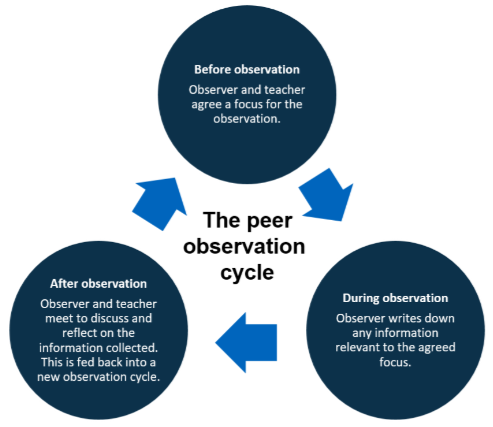Peer observation is a professional development practice that is widely advocated across the Vinschool system. In almost all campuses, it has become regular professional activities which have proven effective in building and developing a professional learning community.
Peer observation of teaching is a formative process where two peers work together and observe each other’s teaching.
At Vinschool, after peer observation, a discussion between two colleagues is highly recommended. Another method is a written shout-outs sent to the colleague who is doing the teaching. The feedback after observation should focus more on strong points they can learn from each other. Regarding areas for improvement, they can also discuss together to come up with solutions.
|
- to enhance teaching through critical reflection on it
- to enhance the quality of teaching and student learning in the department
- to bring benefits to both observers and the person doing the teaching
|
Benefits of having your teaching observed and observing other teachers’ teaching are legion. This process brings benefits to both observers and the practitioner. Some of the benefits include:
- Sharing of good practice
- Sharing critical reflections
- Discussing solutions to shared problems in teaching
- Challenging assumptions about teaching
- Learning about a range of different approaches to teaching and learning
- Boosting confidence for both observers and the person being observed
It is important to note that it is not necessary to always come and observe a more experienced teacher. Even a teacher with a lot of experience can learn a great deal from observing their less experienced counterparts.
|
Below is a model of how peer observation works (adapted from ‘Classroom Observation’ by Matt O’Leary (2014).
For detailed description of each phase in the cycle, please read here.
|
References:
O'Leary, M. (2014). Classroom Observation. Routledge.
https://www.ed.ac.uk/institute-academic-development/learning-teaching/staff/teaching-feedback/peer-observation-of-teaching/aims
